- Jason's Industry Insights
- Posts
- Issue #94
Issue #94
Podcast Ep. 18 | ICYMI:Rogers Class action | Lessons learned from the AWS outage | 10,000th Starlink satellites | Lynk and Omnispace team for D2D | Should kids use AI? | Statement on Superintelligence | Starlink opens ISLs to 3rd parties | How to protect critical infra | Project Bromo, it’s official | BEAD: >20 pct to LEO | Amazon’s new smart glasses | Final Pole Attach Rates | Starshield using unauthorized bands | Kepler contracts for Canadian Arctic Defence | Alberta doubles down on AI DCs | Amazon - robots to replace 600k workers | US passport out of the top 10 | Bring back Blackberry? | 1,300 year old poop and more!

You won’t find a better source for Market Intelligence about Telecom, Space Communications and AI, all in one place, for free, anywhere.
Join thousands of weekly readers.
The Podcast

Episode #18 - The Father of the Cable Modem - DOCSIS, M&Ms, and 20 Engineers Who Changed the World - Rouzbeh Yassini-Fard
In this episode of Jason’s Industry Insights, I chat with Rouzbeh Yassini-Fard, the man known worldwide as the father of the cable modem, to revisit the origins of the broadband era as documented in his recently released book, "The Accidental Network - How a small company sparked a global broadband transformation." (https://a.co/d/3V3A8z5)
Rouzbeh recounts how, in 1987, a 20-person team at LANCity built the first high-speed data network over cable, turning an 80-pound, $18,000 prototype into a $299 modem that changed the world. Their work laid the foundation for the DOCSIS standard, powering billions of broadband connections today.
This isn’t a nostalgic trip, it’s a study in innovation under constraint. Rouzbeh explains how a small startup out-engineered industry giants, created early forms of AI-driven diagnostics, and proved that persistence beats scale.
He shares how customer obsession kept the team moving, like discovering that weekend “network outages” were caused by hunters’ CB radios, seeing how telehealth pioneers used their tech to transfer cancer imaging data between hospitals in 1990, and how a school custodian didn't even know what "IoT" was, but needed it.
Rouzbeh reflects on giving away DOCSIS technology royalty-free to speed global adoption, why he predicts its sunset around 2040, and how broadband will become the foundation for AI infrastructure. His message to entrepreneurs is timeless:
✅ Solve a big problem that matters to people
✅ Build something that works
✅ Let the product do the talking
The conversation also offers a human side - sleep deprivation, car crashes, and six pounds of M&Ms a week that kept the engineers (and their kids) motivated.
Rouzbeh’s story shows how grit, curiosity, and purpose turned a small Massachusetts startup into the birthplace of the broadband era.
Listen on your favourite player or on Spotify
What’s Happening On Earth?
🇨🇦 Rogers class action lawsuit: What you need to know - Here's what to know about the class action suit against Rogers, Fido and Chatr and whether you could receive compensation.
My Take: This wasn’t the big one for 15 hours on July 8, 2022. I forgot about this outage until I received the email from the firm representing the class action.
What the Huge AWS Outage Reveals About the Internet - Amazon Web Services experienced DNS resolution issues on Monday morning, taking down wide swaths of the web—and highlighting a long-standing weakness in the internet's infrastructure.
My Take: This wasn’t just a blip, it was a reminder that “the cloud” is still just someone else’s computer, sitting in one region that the entire internet silently depends on.
Your AI infrastructure is only as strong as your DNS strategy -“It’s always a DNS error” is a common refrain, but one that will be getting more attention now that this week’s Amazon Web Services outage knocked out AI-driven applications and other web services, including Alexa, Kindle, Ring and Prime Video, as well as Google, Hulu, Lyft, Netflix, Reddit, Snapchat, Signal, Starbucks, McDonalds, Lloyds, Halifax; Roblox, Fortnite, Spotify, Starbucks, T-Mobile, Verizon, Venmo, Zoom, and hundreds more — as well as a collective user base of millions of people.
My Take: AI runs on data, but it clearly falls on DNS. The AWS crash proved that even the smartest models are only as stable as their name server. Treat DNS like a dependency, and you’ll keep learning this the hard way. Treat it like infrastructure, and your AI will actually stay online.
🇨🇦 Digital Trends Catching on in Small-Town Canada - the digital transformation that has transformed Canada’s cities into leading tech hubs has for a long time, left much of small-town Canada behind. More recently, however, digital trends appear to be catching on in towns across the country. Thanks to the emergence of critical technological infrastructure and effective government programs, communities and businesses formerly left in the dark by digitalization are now reaping the benefits.
My Take: Small towns in Canada are proving that good internet changes everything. With faster connections, local shops are taking payments online, farmers are selling straight to customers, and new digital jobs are popping up without people having to move to cities. Rural Canada isn’t being left behind anymore, it’s getting a real digital boost.
Opinion: Network operators should watch out for emerging VR gadgets - Last week Charter Communications announced a new agreement with Apple to stream Lakers’ basketball games to Apple’s new Vision Pro VR goggles. Apple and Charter said the games will stream to viewers at up to 150 Mbps.
My Take: A single Lakers game at 150 Mbps shows how quickly “good enough” broadband stops being enough. The next bandwidth crunch might not come from AI, it might come courtside. So much for 50/10, 100/20 and 100/100.
🇨🇦 CRTC approves final telco pole attach rates - The CRTC said the new rates will allow Bell and Telus to recover their costs to support the poles while also ensuring that they facilitate the deployment of broadband for increased competition and lower prices.
My Take: Shared infrastructure means shared responsibility, at some level.
🇨🇦 Cabinet petitions again urge Big 3 wholesale internet access review - Several internet service providers have filed petitions asking cabinet to send back a decision by the CRTC this summer that refused to back down on letting Rogers, Bell and Telus (Big 3) access the wholesale internet regime.
My Take: The CRTC says the move will increase competition. Smaller ISPs and regional carriers say it will destroy it. Their argument is this - letting the country’s dominant players pose as newcomers upends years of policy designed to give smaller carriers the ability to effectively compete.
🇨🇦AG asks court to reject review of cabinet’s decision to deny Big 3 wholesale ban - The attorney general of Canada (AG) is asking the Federal Court to reject an application filed by Cogeco and Eastlink asking the judicial body to review whether cabinet did not provide the legally required justification for rejecting their request to send back a CRTC decision that allows the three largest telecoms to access the wholesale internet framework.
My Take: Is Ottawa still serious about structural competition, or has it quietly chosen incumbents as the long-term stewards of Canada’s broadband market?
🇨🇦 Bell Explains Cause of October Roaming Outage in CRTC Report [Update] - Bell has filed a report with the Canadian Radio-television and Telecommunications Commission (CRTC) detailing the cause of a recent October 6, 2025 service outage that disrupted data access for customers roaming outside Canada.
My Take: So why did it break?
More than 20% of BEAD locations will go to satellite - After all the hand-wringing about the revisions to the Broadband Equity, Access and Deployment (BEAD) program under the Trump administration, it looks like about 67.1% of eligible locations will get fiber, while 20.5% will receive low-Earth orbit (LEO) satellite connections. The remaining locations will receive fixed wireless access (10%) and coaxial cable (2.4%).
My Take: Satellite broadband, once considered a “last resort,” is now recognized as a legitimate complement to national connectivity plans. Let’s not debate whether it’s the right connection or not. “Connected now” beats “fiber someday.”
Bandwidth Hawk: Fiber continues to dominate BEAD deployments - With BEAD proposals now largely submitted, representing $18 billion of the $41.6 billion appropriated for their use by Congress, fiber has still emerged as the technology of choice for over 2.2 million (at least 64%) of broadband serviceable locations (BSLs).
My Take: SpaceX and Kuiper together won roughly 770,000 BSLs. Proof that satellite is now viewed as a legitimate complement for hard-to-reach areas. See what I did there? ;)
Sound rail technology collaboration takes off - We are pleased to announce our exciting partnership with Skylark Drones, a pioneer in the Indian Drone ecosystem, to exploit the fusion of advanced technologies to provide improved monitoring and response to threats and incidents on railway infrastructure.
My Take: Sensonic and Skylark Drones have partnered to fuse fiber-optic acoustic sensing with autonomous drone response for rail safety and security. It’s the kind of quiet innovation that turns old infrastructure into living infrastructure. Very cool. I wonder if they will be weaponized?
Securing the Backbone of Society: How to Protect Critical Network Infrastructure - To ensure safe and reliable operation, operators must detect anomalies early, localize threats precisely, and respond before failures escalate. Distributed Fiber Optic Sensing (DFOS) offers a powerful approach by transforming existing fiber optic cables into continuous, real-time sensing networks. This enables a new level of infrastructure awareness and resilience.
My Take: Fiber isn’t just for data anymore, it’s becoming the nervous system of civilization. DFOS could make our buried infrastructure self-aware, spotting trouble before we do. In a world of rising sabotage and stress, that awareness might be our best defence!
Infrastructure under strain – what the AWS and VDF outages mean for Industry 4.0 - Beyond high-profile global consumer and consumer-enterprise disruptions, the AWS and Vodafone outages this month show how Industry 4.0 can fail without proper cloud and network redundancy.
My Take: As everything becomes connected, we must also prepare for when everything fails. True digital resilience clearly won’t come from bigger or more clouds, it’ll come from smarter semi-autonomous edges.
FWA and fiber fuel outsized broadband subscriber growth at AT&T - AT&T added a better-than-expected 270,000 Internet Air customers while also tacking on 288,000 fiber subs in Q3. AT&T's consumer broadband net adds in Q3 were the best in eight years, said CEO John Stankey.
My Take: Has AT&T cracked the broadband growth code with fiber where it can, wireless where it must?
FWA subscriber share expands even in areas with multiple fixed wireless options - Markets with two or three fixed wireless access (FWA) competitors are broadening, rather than saturating, the technology's share of the broadband sector, a new study shows. Among cable ops, Cable One faces the toughest sledding against FWA.
My Take: The fact that wireless ISPs can grow side by side shows how much broadband demand was left on the table.
🇨🇦 Free Tools to Power Up Your Farm’s Digital Life in Canada - For many Canadian farm families, the internet has become as vital as a tractor or combine. It is how producers manage precision planting, monitor commodity prices, check weather forecasts, pay bills and stay connected with suppliers and customers. However, fast and reliable broadband remains out of reach for many rural communities.
My Take: Not sure how a Speed Test helps..
Ciena tapped by TAFS for Americas fiber network - Ciena and Trans America Fiber System (TAFS) are partnering to deploy a fiber network linking the U.S. with Central America and the Caribbean. Touted by the firms as the first scalable, carrier‑neutral fiber network “in decades” to connect the markets, the TAM‑1 submarine cable is designed to provide a total capacity of more than 650 Tb/s, configured with 24 fiber pairs traveling south and 12 fiber pairs traveling north.
My Take: Critical and vulnerable subsea infrastructure continues to evolve.
Can BlackRock’s $40 B Aligned Deal Make “Time-to-Power” the New Market Multiple? - Inside the record-breaking acquisition that redefines how investors, operators, and sovereigns value AI infrastructure not by earnings, but by how fast power can go live.
My Take: BlackRock’s Global Infrastructure Partners, alongside Microsoft, Nvidia, xAI, and Gulf sovereign funds, is buying Aligned Data Centers for $40 billion. This values the company at about $8 million per megawatt. That price tag signals a shift in how investors value digital infrastructure: from profit metrics like EBITDA to a new one - “time-to-power” where the speed at which megawatts go live has become the most valuable asset.
What’s Happening In Space?
What’s in Space This Week?
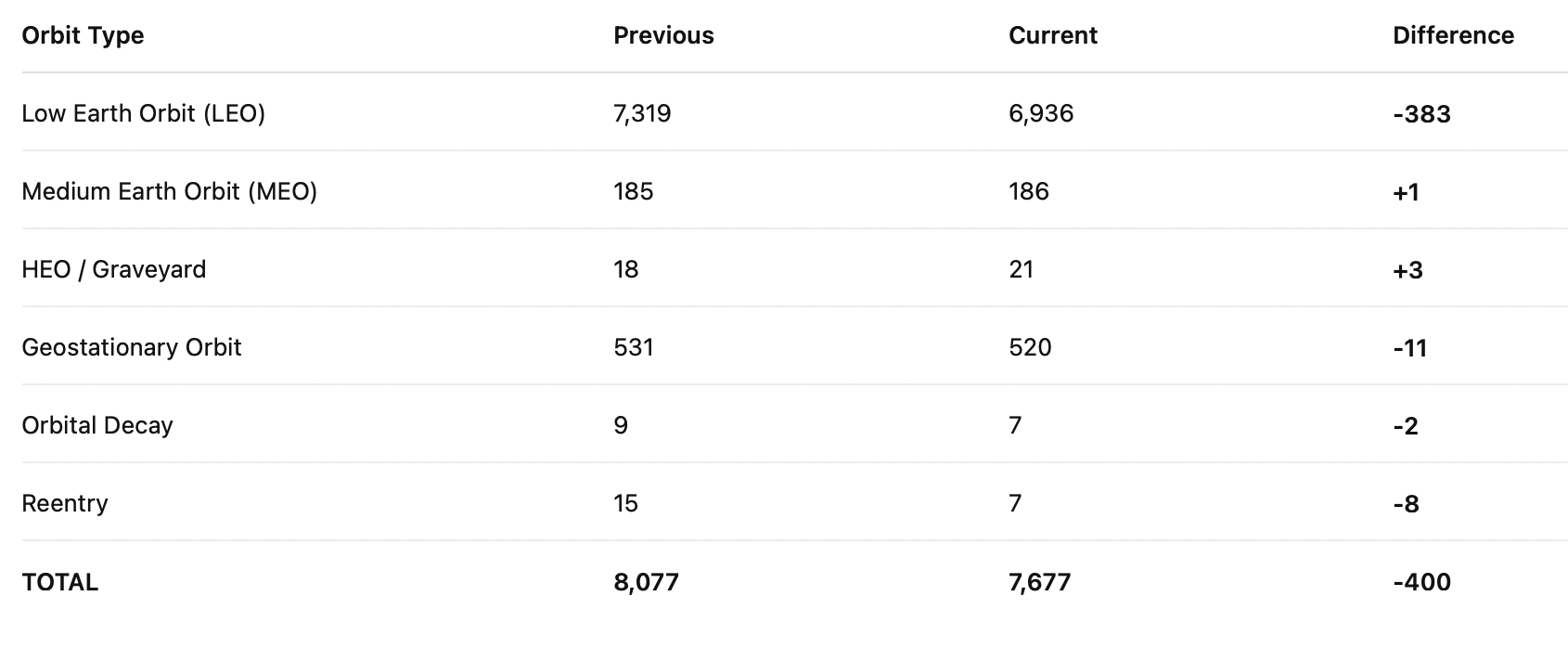
Kepler awarded contract to support Canadian Arctic Defence - The initiative will conduct research and analysis to support the development of technologies enabling resilient space architecture that integrates communications, sensing, and command and control. Kepler’s commercial LEO constellation, the Kepler Network, that will serve as a communication backbone to connect on-orbit platforms with multi-domain assets.
My Take: By tapping Kepler’s space network, Ottawa is saying connectivity up north isn’t optional, it’s foundational. And in the Arctic, satellites might become as important as the naval patrols.
🇨🇦 Starlink Surges in Northern Ontario After Xplore Pulls the Plug - A growing number of Xplore customers in northern Ontario say they’re losing their satellite internet service and switching to SpaceX’s Starlink instead.
My Take: What other option do they have?
10,000th Starlink satellite launched - SpaceX launched its 10,000th Starlink satellite on October 19th at 17.39 UTC. Some observers said there had been a malfunction but SpaceX later confirmed all the satellites had been deployed and the valuable booster stage of the rocket successfully landed on its floating drone ship eight minutes after launch.
My Take: Starlink 10,000. Kuiper, coming up fast with 155.
It’s official: Project Bromo signed and sealed by Thales, Airbus and Leonardo - The agreement will see the three companies combining their respective space activities into a new entity, seeking to produce a company of the size and scale required to secure a strong European foothold in space
My Take: Europe’s space players are finally teaming up. After years of competing against each other, Airbus, Thales, and Leonardo are betting that working together is the only way to stay in the game against the U.S. and China. The new partnership gives Europe real muscle and a shot at space independence, but it’ll still have to pass the regulator test. Either way, it seems a signal that Europe’s done sitting on the sidelines.
Starlink mini lasers to link Muon Space satellites for near real-time connectivity - SpaceX is supplying optical terminals to Muon Space, the four-year-old Californian manufacturer said Oct. 21, enabling its future Halo satellites to use the Starlink broadband constellation as a global data-relay network.
SpaceX Opens Up Its Starlink Laser Tech to Third-Party Companies - Muon Space is integrating SpaceX's 'mini space lasers' into its own satellite network, providing a way to access Starlink for real-time data connectivity.
My Take: So SpaceX is now getting into the data relay space - a place where Kepler, a fine Canadian company is focused. The application makes sense, though. Muon is focused on earth observation and needs to move data around - perhaps to an in orbit data centre for processing prior to making its way back down to earth.
🇨🇦 SpaceX’s Starshield Satellites Detected Transmitting on Unauthorized Bands - A sharp-eyed satellite enthusiast in Canada says he uncovered SpaceX beaming signals on radio frequencies reserved for the opposite direction — a potential breach of international spectrum rules.
My Take: ok, ok.. it was me.. not.. anyway, the guy discovered that SpaceX’s Starshield satellites (the classified, defense-grade version of Starlink) are transmitting on frequencies reserved for uplink (Earth-to-space) communications, not downlink. That’s a potential breach of ITU spectrum rules, and experts warn it could interfere with scientific and commercial satellites. Maybe Elon can do what he wants
Getting To Uranus Could Take Half The Time With SpaceX's Starship - The daring strategy would have the beleaguered vehicle slow down by flying through the planet’s atmosphere.
My Take: 21 years of light. 21 years of darkness. Uranus sounds like a great place.
Three Critical Elements for Tackling Golden Dome Complexities - Golden Dome, the Trump administration’s proposed initiative to develop a multi-layered missile defense system for countering homeland attack threats, is the hot topic in Department of Defense (DoD) circles.
My Take: Golden Dome’s success won’t hinge on rockets or radars; it’ll hinge on how well the Pentagon learns to buy, model, and plug in commercial tech. If DoD treats space like software - iterative, flexible, digital-first, etc - it might actually build a shield that evolves faster than the threats.
4iG weighs $100m investment into Axiom Space as part of orbital data center plan - Hungary telco eager to be on the ground floor of orbital data centers
My Take: The only real power will come from the sun, in orbit. Cooling isn’t as simple as you many think it is.
ULA’s Atlas V plans ViaSat-3 F2 launch November 3 doubling the bandwidth of Viasat’s entire fleet - Once in service, VS-3 F2 is expected to more than double the bandwidth capacity of Viasat’s entire existing fleet and marks a significant milestone in our satellite roadmap.
My Take: Not much to say. More is better, of course. Trying to make GEO cool agian ;)
🇨🇦 Viasat Showcases Government Arctic Capabilities in Canadian Test Flight - As the Arctic region grows in importance for governments, mobility providers, and scientists, Viasat has completed a successful test flight in Northern Canada above 63.5° North Latitude - showcasing high-speed connectivity.
My Take: Didn’t work so well on my Porter Airlines flight last week ☹️ Anyway, the Arctic region is the new battleground for ownership and service delivery.
How satcom is shaping the future of fast, accurate warfare (podcast) - "Speed is the key advantage and accuracy is the key outcome": Amazon Kuiper Government Solutions’ Rick Freeman talks to Shephard’s Georgia Lewis about how space-as-a-service is transforming defence connectivity and access to satellite capabilities.
My Take: Satellite-as-a-Service. Redefining modern warfare by linking every domain - land, air, sea, space, and cyber - into a single connected battlespace
Hybrid SATCOM: Delivering Resilient and Agile Connectivity Today - In today’s dynamic threat landscape, the ability to maintain uninterrupted communication is nonnegotiable.
My Take: Multi-orbit, multi-resilience.
SpaceX Expands 'Free' Starlink Dish Offer Across US (But You Don't Actually Own It) - In some parts of the US, SpaceX is also offering free professional installation.
My Take: You just rent it for free, but you don’t own it. They finally got me with one of the promotions. 50% off any reconnected plan. I went for the standby plan. 500kbps/500kps active service with a quick move into a service tier - all for $3.50 / month - the same as an overpriced tea at Starbucks.
Satellite borrows a page from SD-WAN for multi-orbit connectivity - GEO and MEO players are also partnering with LEO operators for multi-orbit solutions.
My Take: Multi-orbit makes a lot of sense. One virtual platform with the ability to service any application with a level of service.
🇨🇦 Future-proofing LEO investments: Strategies for enduring value in a dynamic ecosystem - As Low Earth Orbit (LEO) satellite networks become a cornerstone of global connectivity strategies, government agencies and commercial enterprises are increasingly committing capital, operational resources, and long-term strategic initiatives to this transformative technology. They are making these investments because LEO satellite networks deliver fibre-like performance with global reach, which is essential for every organization with remote connectivity and mobility requirements.
My Take: Innovation on the ground is just as important as innovation in space.
Direct To Device
Lynk and Omnispace Announce Plans to Merge to Deliver Next-Generation Global Direct-to-Device (D2D) Connectivity - The combined entity will leverage Omnispace’s 60 MHz of globally coordinated S-band spectrum and its high-priority filings with the International Telecommunication Union (ITU), optimized for D2D services.
Lynk, Omnispace to merge in drive to grow D2D - In an attempt to speed their efforts in the direct-to-device (D2D) satellite cell phone market, Lynk Global and Omnispace are merging, with SES becoming a major strategic shareholder.
Lynk Global agreed to merge with fellow satellite company Omnispace with SES becoming a major shareholder in the new joint entity, in a deal intended to boost direct-to-device (D2D) connectivity.- This will be combined with Lynk’s multi-spectrum technology platform, which currently provides messaging and alert services. Lynk explained its relationship with more than 50 MNO customers across more than 50 countries “will see significant benefit from the enhanced D2D offering”, as a result of the merger.
Following up on my earlier post about the Omnispace–Lynk merger, here’s an NCAT animation showing the current configuration of their combined constellation. - Together, they now operate 7 satellites in Low Earth Orbit (LEO), flying at altitudes between 400 and 700 km with similar polar inclinations. (Carlos Placido)
My Take: “The combination will benefit from Lynk’s patented, proven, low-cost, multi-spectrum satellite technology platform. Lynk’s technology enables backward compatible satellite-delivered mobile voice and messaging services to more than 7 billion smartphones and IoT devices and will leverage the S-band to offer a step-change in its data, voice and messaging services to new smart phones and IoT devices, including automotive platforms. Lynk’s relationships with over 50 MNO customers across more than 50 countries will see significant benefit from the enhanced D2D offering.”
Starlink has scale and speed. AST Mobile has throughput. Lync-Omnispoce has globally coordinated spectrum, MNO agreements, strong global roaming and 3GPP-NTN alignment.
Enabling AI
The 4 AI questions every CEO needs to ask to succeed - How to maximize the technology’s impact on your organization.
My Take: MCP is an open standard (protocol) for connecting AI models (LLMs) to external data sources, tools, and workflows. It helps AI agents access context and use tools beyond their training data. It aims to avoid point-to-point custom integrations for each data source. Saying “MCP is model context protocol” is fine, but specifying it as “a server that sits in front of a data repository” is too narrow and slightly misleading.
Google Cloud collaborates with the TM Forum community on building true network autonomy - Ahead of TM Forum's autonomous networks executive workshop, Google Cloud spells out the roles of digital twin, Graph AI, and agentic workflows in achieving Level 5 network autonomy.
My Take: Are operators ready to let the network be in charge?
🇨🇦 Alberta doubling down on AI data centres with new mandate for utilities minister - Alberta is doubling down on artificial-intelligence data centres as part of a new mandate for Affordability and Utilities Minister Nathan Neudorf, as the province looks to fast-track projects that generate their own electricity to avoid straining the public grid.
My Take: They have no power. They need some other source.
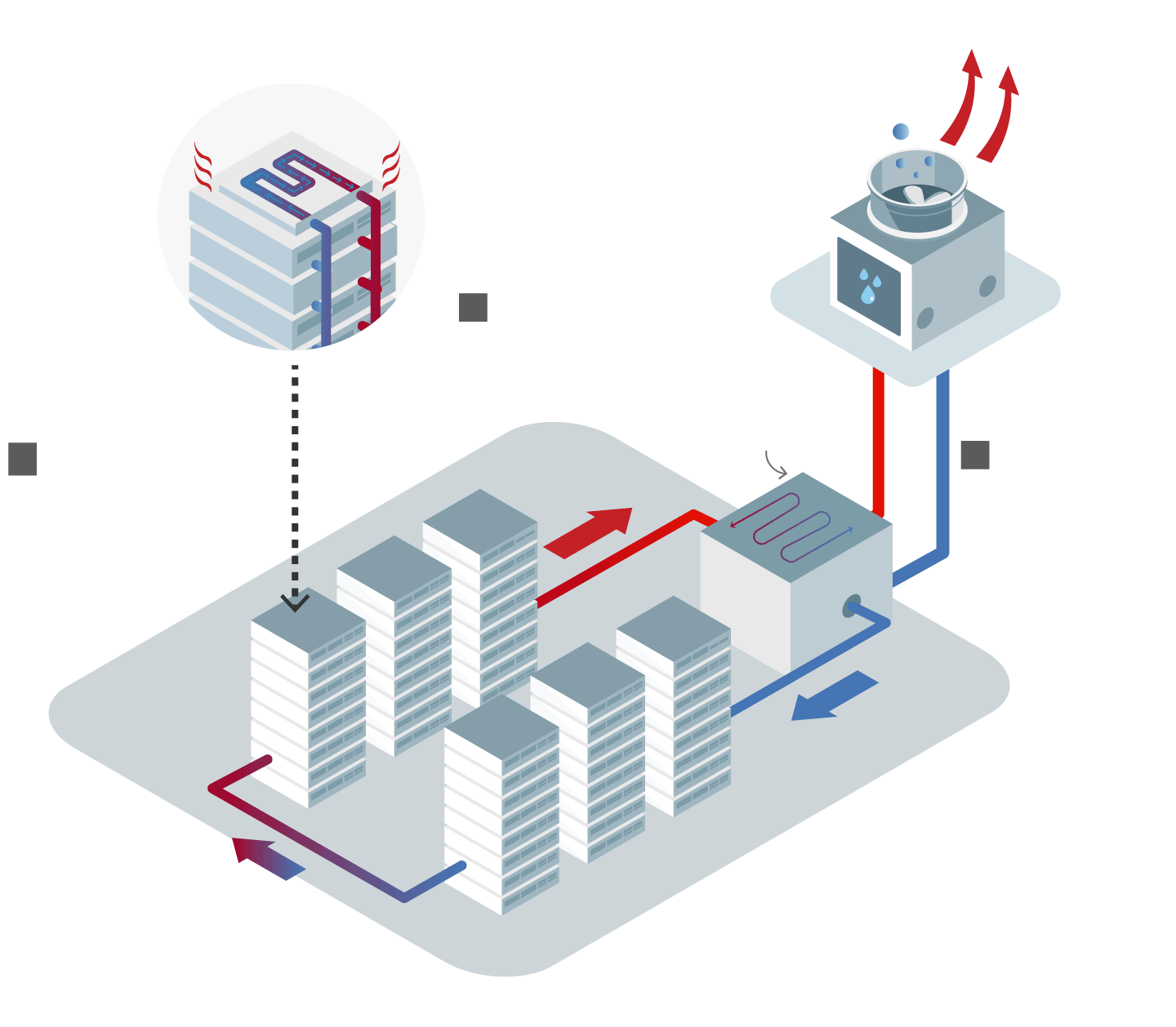
My Take: Water and power. Water can be reused for residential heating and all sorts of other interim applications.
🇨🇦 Should kids use artificial intelligence? Parent reactions are mixed - “The thing that scares me is that AI is going to evolve at such a pace that parents won’t be able to continue to be that firewall and say, ‘This is how we’re using this,’” Mr. Miller says. “Now, this is how it’s using us.”
My Take: Yea, with guardrails and with parents who are 10-steps ahead.
🇨🇦 Gen Z, the first AI generation, believe AI's future is in the classroom - New TELUS research reveals that Gen Z, North America's first AI generation, is embracing AI with a clear vision for its future: the classroom. Among the Canadian and American Gen Z cohort surveyed in the study, many are optimistic about using AI in education (46% Canada and 45% U.S.), demonstrating more enthusiasm for seeing AI used in the classroom than other age groups polled*. While AI in education has its own challenges that must be addressed, the results of the survey suggest that this generation sees the potential learning benefits of the technology, which can offer improved accessibility, customized learning paths and more.
My Take: AI teachers. I wonder how that will work? It all comes down to teaching about AI and how to use it properly. Forget keyboard skills. Learn to prompt.
AI for medical documentation frees doctors from the keyboard - Physicians have been hunched over keyboards, their eyes fixed on screens instead of patients. But 2025 promises to break this cycle as artificial intelligence finally delivers on the original promise of electronic health records -- returning the human touch to healthcare while AI for medical documentation handles the paperwork.
My Take: My doctor started with this last year. Now he just captures everything I say, so I add some words every now and then just to screw with it.
Autonomous Network Operations - Traditional network operations are often manual, reactive, and struggle to keep pace with the dynamic nature of modern telecom networks. Autonomous Network Operations aims to address these challenges by introducing a high degree of automation, driven by AI and machine learning. This allows for proactive network management, predictive maintenance, and optimized resource allocation. Google Cloud provides a rich ecosystem of tools and services that are ideally suited to build and deploy such a sophisticated Autonomous Network Operations framework.
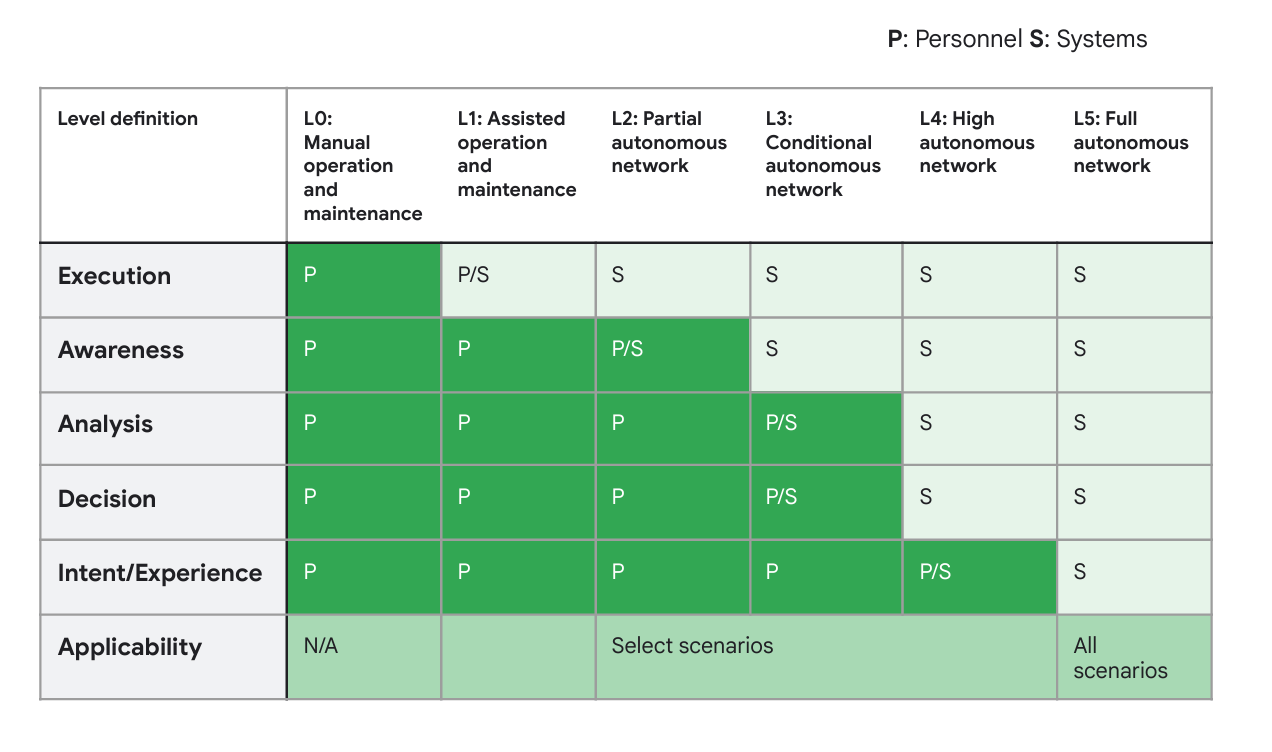
My Take: Great chart. The link will take you right to the paper.
How AI agents are helping design, build, and deliver great services and products - Based on a survey of 489 senior leaders in the telecommunications industry, this report unpacks the stats to give you an up-to-the-minute snapshot of how gen AI and agentic AI are delivering value today.
My Take: Download the report for all the info.
This is Gemini-CLI + Gemini Computer Use Extension in action. A human built the machine… that runs the machine… that runs the web. We’ve crossed from command lines into cognition — from automation into agency.
My Take: Watch John’s stuff. He’s so far ahead of things and really does some very interesting things. I don’t even know if he’s real anymore, or just some representation of himself created by whatever has him locked in his bedroom closet.
Amazon unveils AI smart glasses for its delivery drivers - The idea behind the glasses is to give delivery drivers a hands-free experience that reduces the need to keep looking between their phone, the package they’re delivering, and their surroundings.
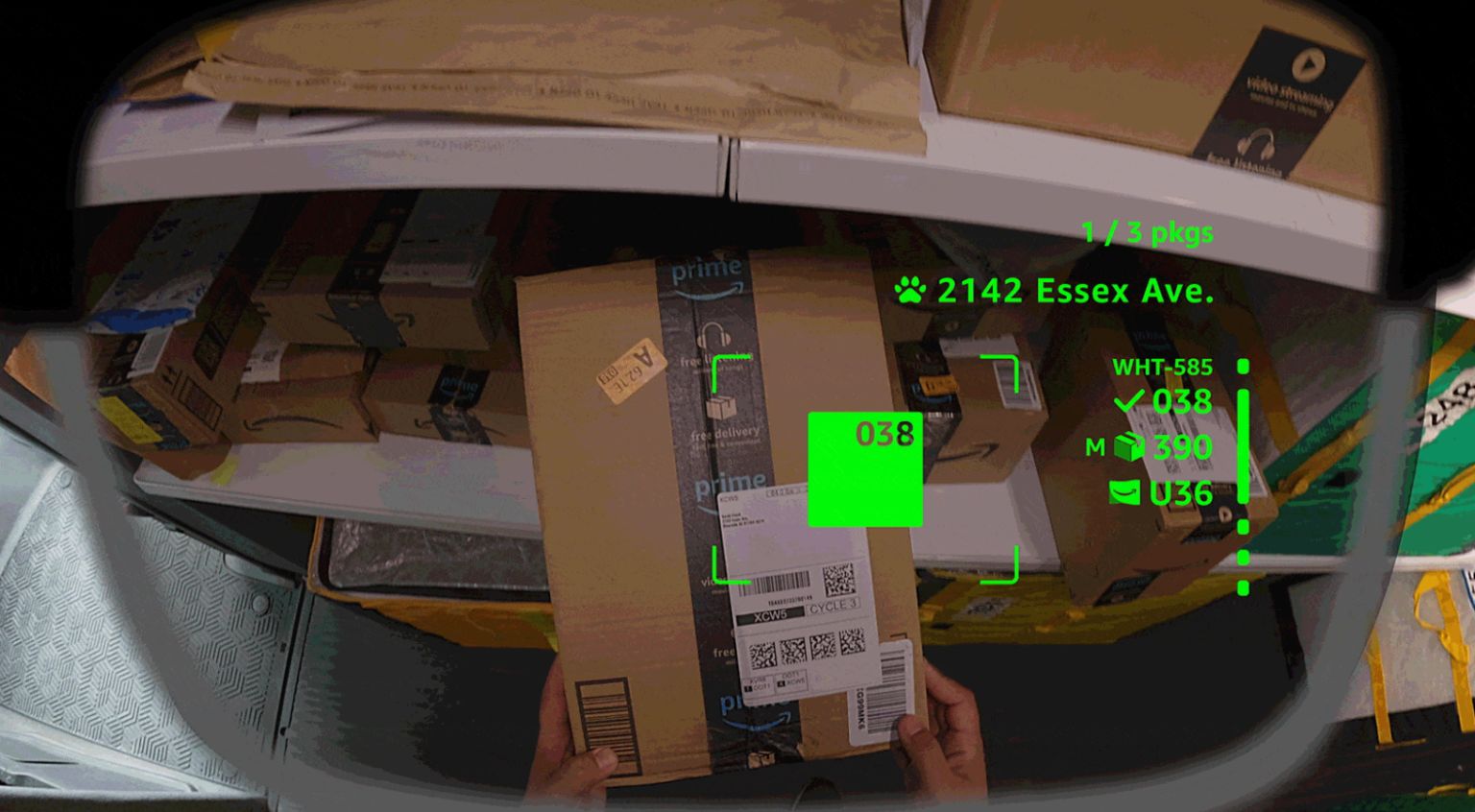
My Take: So this is pretty cool, and a great application of technology, as far as I’m concerned. They can also record all the packages that are regularly thrown at my front door. Perhaps with an indication of MPH, flight time and impact velocity.
Netflix goes ‘all in’ on generative AI as entertainment industry remains divided - “It takes a great artist to make something great,” Netflix CEO Ted Sarandos said on Tuesday’s earnings call. “AI can give creatives better tools to enhance their overall TV/movie experience for our members, but it doesn’t automatically make you a great storyteller if you’re not.”
My Take: No, but it removes the people at some point. I don’t know if I could watch an “AI” movie knowing it was “fake.” Wasn’t a big fan of the Avatar movies, if that’s any indication.
AI Assistants Emerging as a Rival to Traditional Apps for Everyday Tasks - According to a new survey from TELUS Digital, consumers are using AI assistants in place of traditional apps, with nearly one-third (32%) saying they have replaced at least one app with an AI assistant in the past year. The top reasons given were greater convenience (62%), faster results (54%) and a better overall user experience (53%). A year from now, 36% of survey respondents think they will rely on AI assistants more than apps for the majority of everyday tasks.
My Take: This is good. People need to adapt and get on board — and LEARN.
19 Things Larry Ellison Just Told Us About the Future of AI Infrastructure (And Why They Matter) - Larry Ellison’s 2025 Oracle AI World keynote was one of the most revealing tech presentations of the year. It showed how Oracle is repositioning itself from a software vendor into a full-stack AI infrastructure and applications company—one that builds data centers, generates power, and embeds AI directly into enterprise data systems.
My Take: If he’s right, the next AI arms race won’t be about smarter models but who can flip the biggest power switch fastest. I think we’re actually pretty close to that now.
ChatGPT Atlas - Bring ChatGPT with you across the web for instant answers, smarter suggestions, and help with tasks—all with privacy settings you can control.
My Take: Currently playing with this, and Perplexity’s Comet. I can’t decide if it’s making me more efficient, lazy or stupid - or if this is just the new reality and we all need to get on board. Anyone remember Netscape?
Statement on Superintelligence - Innovative AI tools may bring unprecedented health and prosperity. However, alongside tools, many leading AI companies have the stated goal of building superintelligence in the coming decade that can significantly outperform all humans on essentially all cognitive tasks. This has raised concerns, ranging from human economic obsolescence and disempowerment, losses of freedom, civil liberties, dignity, and control, to national security risks and even potential human extinction. The succinct statement below aims to create common knowledge of the growing number of experts and public figures who oppose a rush to superintelligence.
My Take: We’ve all seen this movie, thinking it was just science fiction. Creating somethign that is smarter than the people who created, can outthink then and outpace them is not smart.
This and That!
US drops out of world’s most powerful passport top 10 list for the first time - What makes a passport “powerful”? Well, a clear measure is travel openness, the ability to slip into destinations around the world with a breezy wave of your passport, no visa required.
My Take: Canada, 9th. USA, 12th.
Amazon Wants to Replace 600,000 Workers With Robots - The company’s automation team wants to avoid hiring more than 600,000 workers in the US by 2033, even as Amazon expects to sell roughly twice as many products during that period. The math here is basically more sales, fewer humans.
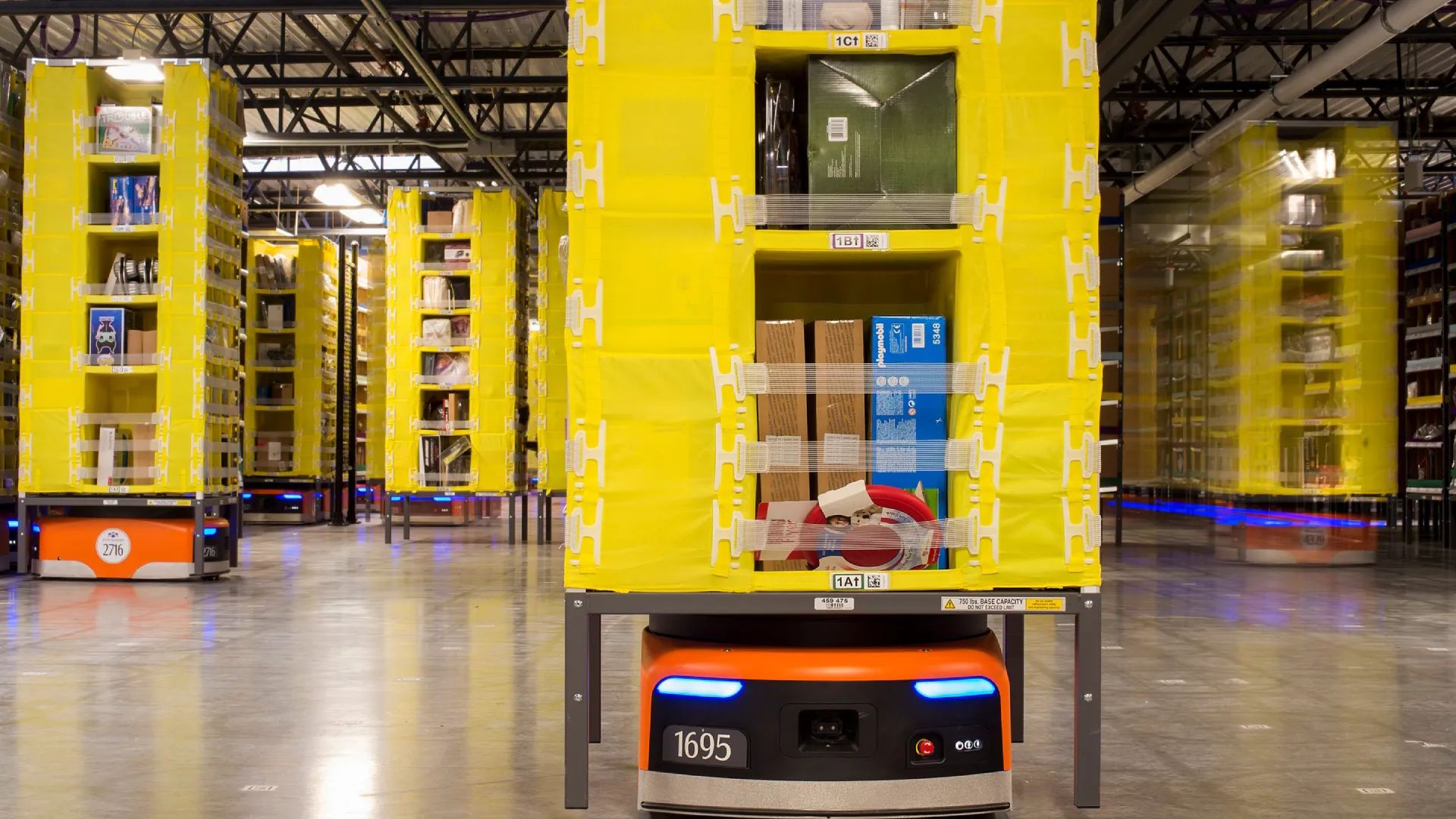
My Take: I’m ok with that for Amazon. They can work without a break. Donald’s demands of the auto industry will drive the same behaviour, and will put a lof of people out of work.
🇨🇦 Defence Investment Agency - The Defence Investment Agency is modernizing Canada’s defence procurement by centralizing expertise, cutting red tape and streamlining decisions. This means faster delivery of critical equipment to the Canadian Armed Forces and the Canadian Coast Guard, protecting Canada’s sovereignty and strengthening our armed forces.
My Take: All of a sudden, defence is cool again, and seems to have some money to spend, or at least is being targeted for spend.
Bring Back Blackberry - The people have spoken: they want BlackBerry back! We have the plan, but need your help. Sign the petition.
My Take: This taps into Gen Z’s nostalgia and growing “dumbphone” trend with people wanting simpler, distraction-free devices with physical keyboards. The movement claims over 500,000 backers, a podcast, meet-ups, and a push for modern hardware inspired by BlackBerry’s design and ethos. Nonsense.
Plane makes emergency landing after pilots lose contact with flight attendants and hear banging on cockpit door - An American Airlines flight, operated by SkyWest Airlines, made an emergency landing Monday night in Nebraska, after the pilots could not reach the flight attendants and heard someone outside the cockpit door, according to the Federal Aviation Administration.
My Take: Does nothing work properly anymore? Are we that tied to the digital world? Was the cockpit door tied to AWS?
Netflix's blockbuster run loses spark amid valuation jitters - But since peaking in June, shares have declined more than 16%, signaling that investors are growing cautious about its lofty valuation and lack of details about subscriber growth. The company's forward price-to-earnings multiple stands at nearly 40, far more than other media companies and major tech names.
My Take: Once upon a time, Netflix cost me about $9.99/month. Well over $20/month now. Perhaps people have grown tired of their pricing model.
Startup SpectralDSP accuses Apple, Nvidia and others of stealing vital tech, and its owner claims to have the kill switch - SpectralDSP's technology, if fully realized, could demand a rewrite of information theory, and the startup's boss says it is being illegally used by major corporations.
My Take: “Fantasy is one explanation, but the details merit serious analysis”
Meta to shut down Messenger desktop apps for Mac and Windows - Starting December 15, users will no longer be able to log into the apps and will be automatically redirected to the Facebook website to access Messenger.
My Take: Does anyone really care about this? Likely why they’re shutting it down - that, or they accidentally got rid of the guy who supported it. He took his red swingline stapler and went home.
2025 Calix Partner Awards Honor Visionary and Dedicated Leaders Accelerating Broadband Provider Growth - “Calix Partner Award Training Achievement”: Clearcable Inc. completes 100 percent of Calix training roadmaps. Clearcable ’s team of network experts exemplifies what it means to make training a cornerstone strategy. Their team achieved 100 percent completion across Calix sales and technical product training roadmaps, with four team members scoring above 94 percent in the Calix Certified Partner Program. This investment enables a trained team to deliver consistent customer value, strengthen relationships through consultative engagements, and boost sales performance.
My Take: Congratulations to the fine folks at ClearCable!
1,300-year-old poop reveals pathogens plagued prehistoric people in Mexico's 'Cave of the Dead Children' - Scientists analyzing 1,300-year-old human feces from the Cave of the Dead Children in Mexico have discovered that people often dealt with nasty intestinal infections more than a millennium ago.
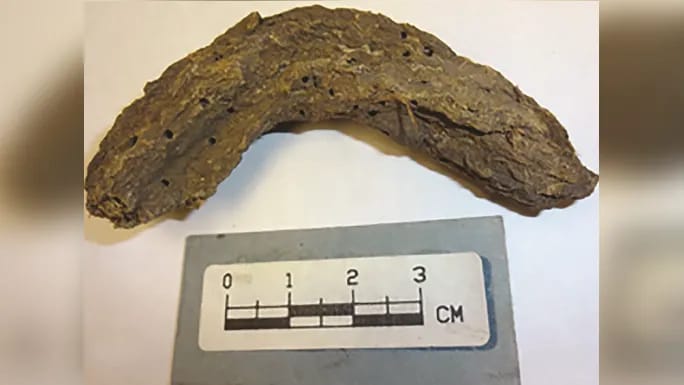
My Take: ..but here’s the interesting part, aside from the poop. What is the Cave of the Dead Children? The cave was used by people from the prehistoric Loma San Gabriel culture, who practiced small-scale agriculture, produced unique ceramics, lived in small villages and occasionally practiced child sacrifice. Archaeologists named the cave after the skeletons of children found there
Infographic Of The Week
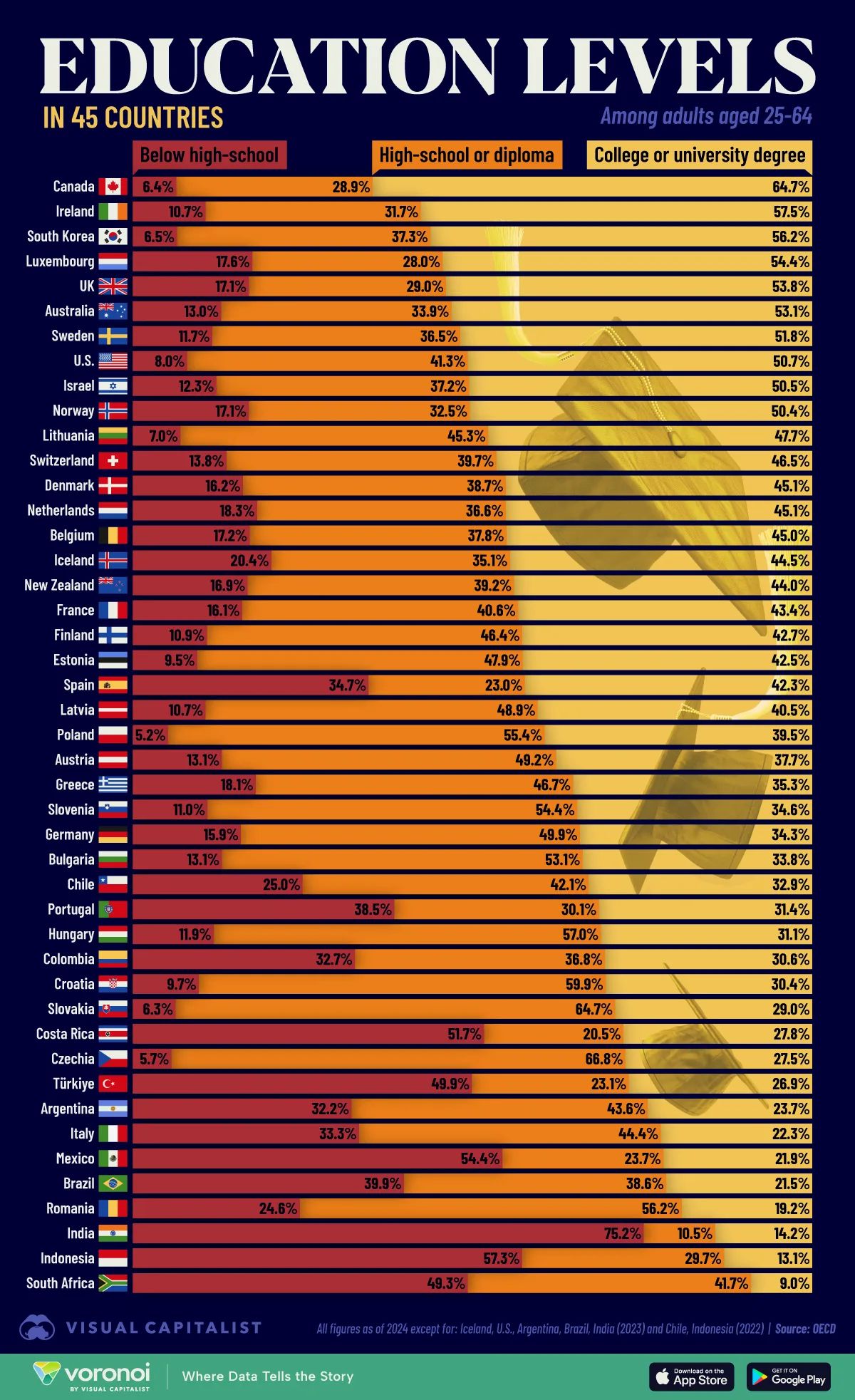
My Take: We already knew this, didn’t we? 🇨🇦 1️⃣
Podcast Recommendation
Starlink has become the most disruptive force in the satellite industry, and the new service-level agreement (SLA) guarantees for its ‘Priority’ packages add to the disruption.
In this episode, space and satellite experts Christopher Baugh and Lluc Palerm discuss how these developments are changing competition in high-value verticals such as backhaul, enterprise and maritime. They explore how traditional satellite connectivity providers can defend their positions, differentiate their services and continue to deliver value in an increasingly Starlink-dominated market.
Listen Here!
Movie/Streaming Recommendation
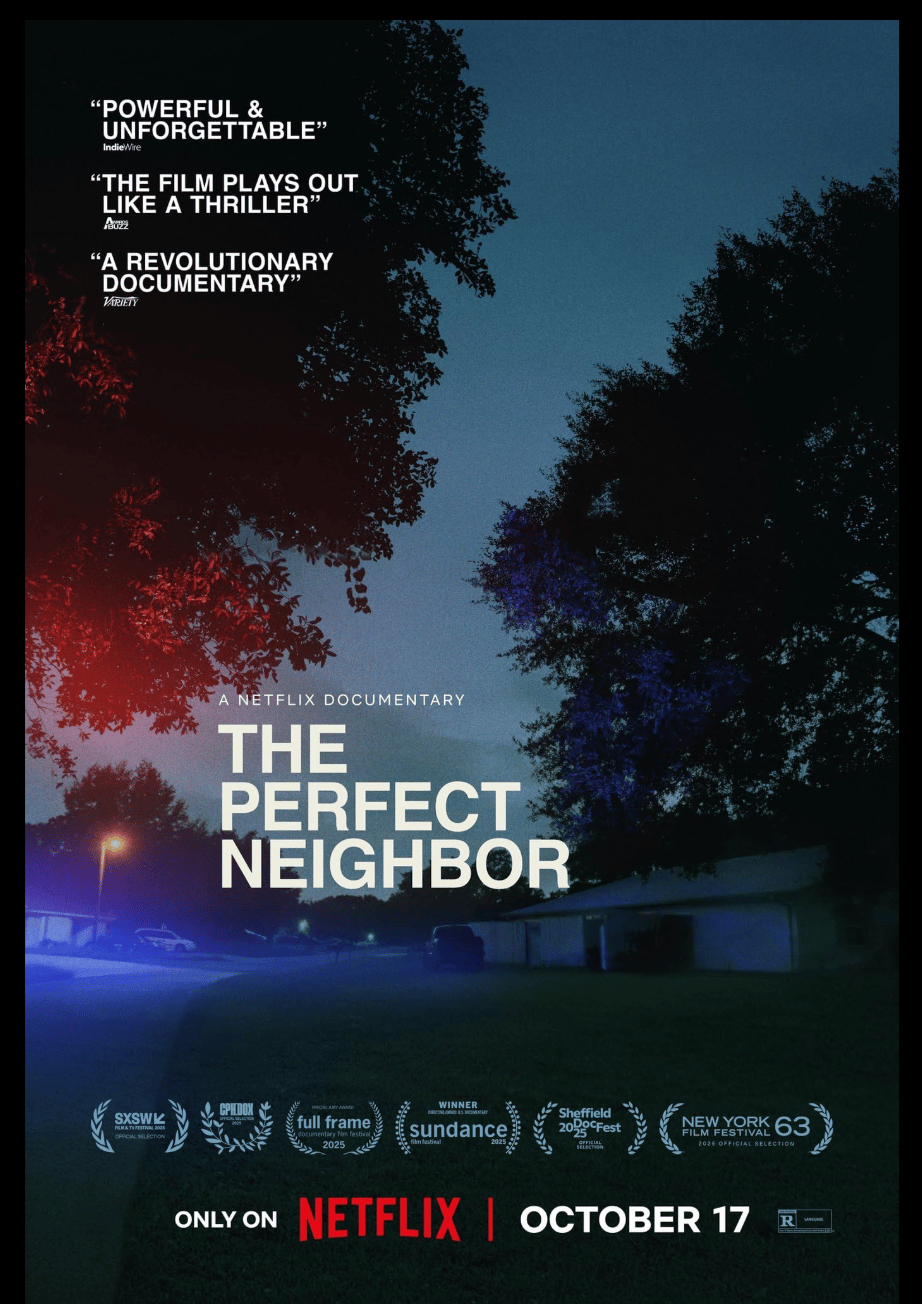
IMDb: 7.2/10
JMDb: 🍿🍿🍿🍿🍿🍿🍿🍿/10 (Glorious Carnage, indeed)
Netflix’s The Perfect Neighbor is a deeply unsettling and powerful documentary composed almost entirely of police bodycam footage, immersing viewers in the tragic events leading to the 2023 shooting of Ajike "AJ" Owens by her neighbor, Susan Lorincz. Director Geeta Gandbhir eschews traditional narration, allowing the raw interactions and escalating neighborhood tensions to speak for themselves. What emerges is a stark indictment of law enforcement’s inertia and the failure of Florida’s Stand-Your-Ground law to prevent racially charged violence.
The editing builds a pervasive sense of dread as Lorincz’s complaints about local Black children grow increasingly hostile, highlighting unchecked grievance and systemic bias. The intimate view provided by real-time footage makes the senseless tragedy heartbreakingly immediate and exposes a community’s collective sorrow. Relentlessly intense yet vital viewing, The Perfect Neighbor provokes reflection on race, fear, and the urgent need for change.
A Word From Our Partner
Join over 4 million Americans who start their day with 1440 – your daily digest for unbiased, fact-centric news. From politics to sports, we cover it all by analyzing over 100 sources. Our concise, 5-minute read lands in your inbox each morning at no cost. Experience news without the noise; let 1440 help you make up your own mind. Sign up now and invite your friends and family to be part of the informed.
Until Next Time
Comments here are my own and do not represent the opinions, views or thoughts of any person, company or organization that I may be associated with.
Feedback, comments and ideas are welcome. Message me on LinkedIn or contact me at j[email protected]
Want to support this newsletter? Feel free to buy us a coffee to show your support!
This site may contain links to affiliate websites, and we receive an affiliate commission for purchases made by you on the affiliate website using such links.
Thinking about a newsletter of your own? Check out beehiiv!





Reply